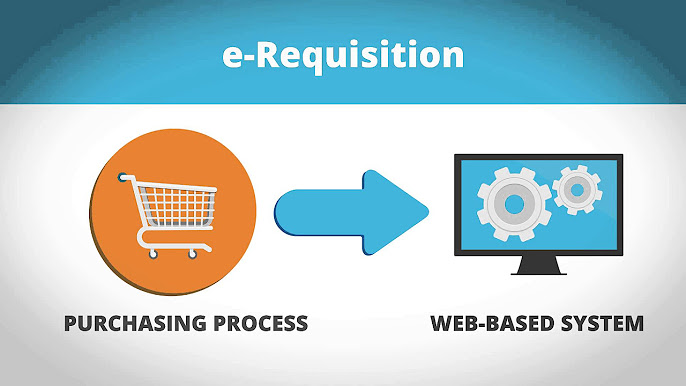
Efficient E-commerce Requisition Strategies for Business Success
In today's digital landscape, e-commerce requisition strategies are pivotal for businesses aiming to streamline procurement processes and optimize operational efficiency. Whether purchasing office supplies, equipment, or services, adopting efficient e-commerce requisition strategies can significantly impact organizational success. This blog explores key strategies to enhance e-commerce requisition practices and achieve business success.

Understanding E-commerce Requisition
E-commerce requisition involves the electronic process of requesting, approving, and purchasing goods or services through online platforms. It integrates purchasing workflows with catalog management, budget controls, and approval hierarchies to streamline procurement operations. Efficient strategies in e-commerce requisition not only simplify the purchasing process but also ensure compliance, cost control, and operational agility.
Key Strategies for Efficient E-commerce Requisition
1. Centralized Catalog Management
Comprehensive Catalogs: Maintain centralized catalogs that include a wide range of approved products and services.
Regular Updates: Ensure catalogs are updated regularly with accurate product descriptions, pricing, and availability to facilitate informed purchasing decisions.
2. User-Friendly Requisition Interface
Intuitive Design: Design an easy-to-navigate interface that allows users to browse catalogs, select items, and create requisition requests efficiently.
Mobile Accessibility: Ensure accessibility from mobile devices to enable employees to submit requisitions on the go.
3. Automated Workflow and Approval Processes
Streamlined Approval Chains: Implement automated workflows that route requisition requests to appropriate approvers based on predefined rules and authorization levels.
Integration with ERP Systems: Integrate with enterprise resource planning (ERP) systems to automate purchase order creation and supplier management processes.
4. Budget Monitoring and Control
Real-Time Budget Visibility: Provide real-time visibility into budget availability and spending limits during requisition creation.
Alerts and Notifications: Set up alerts and notifications for budget exceedances to prevent overspending and ensure financial discipline.
5. Supplier Integration and Management
Approved Vendor List: Maintain an approved vendor list and integrate with preferred suppliers to streamline order processing and ensure compliance with procurement policies.
Performance Monitoring: Monitor supplier performance metrics, such as delivery times and quality, to optimize vendor relationships and enhance procurement efficiency.
6. Data Analytics and Reporting
Performance Metrics: Utilize analytics dashboards to track requisition trends, spending patterns, and compliance metrics.
Decision Support: Leverage data insights to make informed decisions, optimize procurement strategies, and identify cost-saving opportunities.
Benefits of Efficient E-commerce Requisition Strategies
Improved Efficiency: Streamline procurement processes, reduce manual intervention, and eliminate processing delays.
Cost Savings: Enhance cost control measures through budget monitoring, spending limits, and negotiated pricing with suppliers.
Compliance and Transparency: Ensure adherence to procurement policies and regulatory requirements while increasing transparency in purchasing activities.
Enhanced User Experience: Provide employees with a seamless requisition experience, leading to higher adoption rates and satisfaction.
Business Agility: Enable quick adaptation to changing market conditions and operational needs through agile procurement practices.
Conclusion
Efficient e-commerce requisition strategies are integral to achieving business success by optimizing procurement operations, controlling costs, and enhancing organizational agility. By implementing centralized catalog management, user-friendly interfaces, automated workflows, and robust analytics, businesses can streamline requisition processes and drive efficiency across their procurement operations. Embracing these strategies not only improves operational effectiveness but also empowers businesses to achieve strategic objectives and maintain competitive advantage in today's fast-paced digital economy.
Article Contents
- Centralized Catalog Management
- User-Friendly Requisition Interface
- Automated Workflow and Approval Processes
- Budget Monitoring and Control
- Supplier Integration and Management
- Data Analytics and Reporting